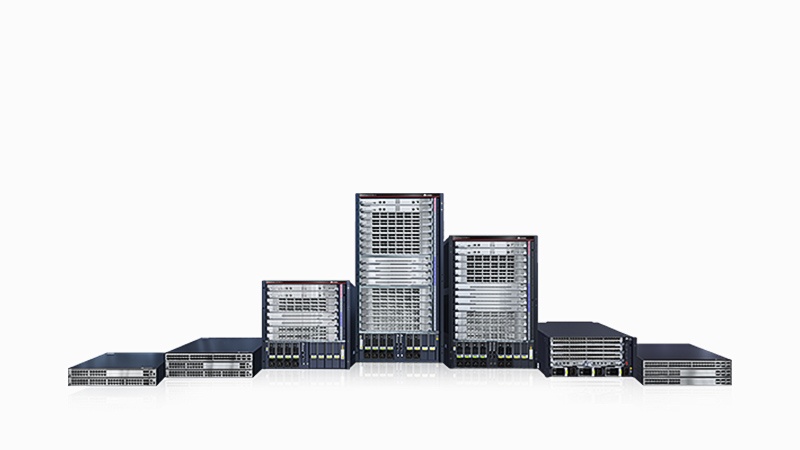Thermal Transfer Label Printer vs. Normal Printers: What Are the Differences?

In the world of printing, understanding the differences between thermal transfer label printers and normal printers is essential, especially if you’re in a business that relies heavily on labeling or document printing. Both technologies have their unique features and are suited to different applications. Here are ten key points of comparison to help you choose the right printer for your needs.
1. Printing Technology
Thermal Transfer Label Printers: Thermal transfer label printers utilize heat to transfer ink from a ribbon onto the label material. The print head heats the ribbon, causing the ink to melt and adhere to the label, creating a durable and long-lasting print. This method is excellent for producing high-quality, resistant labels that can withstand various environmental conditions.
The process is highly precise and controlled, making it ideal for barcode printing, product labeling, and any application requiring crisp, clear text and images. The absence of liquid ink or toner means fewer maintenance issues and a more streamlined printing process, reducing downtime and improving efficiency.
Normal Printers: Normal HP printers in Qatar or printers from any other brand, encompassing inkjet and laser printers, operate on different principles. Inkjet printers spray tiny droplets of liquid ink onto paper, while laser printers use static electricity to attract toner powder to the paper, which is then fused using heat. These printers are designed primarily for document printing and are versatile in handling various paper types and sizes.
Normal printers excel at producing high-quality text and images on standard paper. They are commonly used in offices and homes for printing documents, photos, and other materials where the print quality and color accuracy are essential. However, they may require regular maintenance and refills of ink or toner cartridges.
2. Print Quality and Durability
Thermal Transfer Label Printers: The print quality of thermal transfer label printers is exceptionally high, particularly for text and barcodes. The heat transfer method ensures that the ink adheres firmly to the label, producing sharp and clear prints that are resistant to smudging, fading, and chemicals. This durability is crucial for labels used in harsh environments, such as warehouses, manufacturing plants, and outdoor settings.
Thermal transfer labels can withstand extreme temperatures, moisture, and abrasion, making them ideal for applications where longevity and resistance are critical. This reliability ensures that barcodes and text remain readable and intact throughout the product’s lifecycle.
Normal Printers: While normal printers can produce high-quality prints, the durability of the output varies based on the printer type and materials used. Inkjet prints, especially those using pigment-based inks, can be quite durable and resistant to fading, but they are still susceptible to smudging when exposed to moisture. Laser prints, on the other hand, offer better resistance to smudging but may fade over time when exposed to sunlight or harsh conditions.
Normal printers are suitable for standard document printing and photo printing where long-term durability is less critical. For documents and images intended for archival purposes, special paper and inks can be used to enhance longevity and resistance to environmental factors.
3. Cost of Printing
Thermal Transfer Label Printers: The cost of printing with a thermal transfer label printer can be higher initially due to the expense of the printer and the need for ribbons. However, the overall cost can be offset by the long-term savings in maintenance and consumables. Since thermal transfer printers have fewer moving parts and no need for ink or toner refills, they tend to have lower operating costs over time.
The durability of the prints also means fewer reprints and replacements, further reducing the overall cost. For businesses that require high-volume, high-quality label printing, the investment in a thermal transfer label printer can prove to be cost-effective in the long run.
Normal Printers: Normal printers, especially inkjet models, often come with a lower initial purchase price, making them more accessible for personal and small business use. However, the ongoing costs of ink or toner cartridges can add up quickly, particularly for high-volume printing. The cost per page can be relatively high, especially for color printing.
Laser printers tend to have a higher upfront cost but lower per-page printing costs compared to inkjet printers. For businesses with moderate to high printing needs, the cost savings on consumables can make laser printers a more economical choice over time.
4. Print Speed
Thermal Transfer Label Printers: Thermal transfer label printers are designed for speed and efficiency, making them ideal for high-volume label production. They can print hundreds of labels per minute, depending on the printer model and label size. This speed is particularly beneficial in industries such as logistics, retail, and manufacturing, where timely and accurate labeling is crucial.
The quick printing process is facilitated by the lack of drying time, as the heat transfer method immediately adheres the ink to the label. This allows for continuous, high-speed printing without the risk of smudging or delays.
Normal Printers: The print speed of normal printers varies widely depending on the type and model. Inkjet printers are generally slower than laser printers, especially when printing high-quality images or color documents. Laser printers, known for their speed, can produce a significant number of pages per minute, making them suitable for busy office environments.
For document-heavy tasks, such as printing reports, brochures, or marketing materials, laser printers provide a good balance of speed and quality. However, for photo printing or lower-volume tasks, the speed of inkjet printers is usually sufficient.
5. Versatility
Thermal Transfer Label Printers: Thermal transfer label printers are specialized machines primarily designed for label printing. While they excel at producing durable and high-quality labels, their use is generally limited to specific types of printing, such as barcodes, shipping labels, and product tags. They are not typically used for printing standard documents or photographs.
The specificity of their function means they may not be the best choice for tasks requiring a variety of print outputs. However, for businesses with specialized labeling needs, their precision and reliability are unmatched.
Normal Printers: Normal printers, including both inkjet and laser types, offer a high degree of versatility. They can print a wide range of materials, from standard documents and reports to high-quality photographs and marketing materials. Many models also offer additional features such as scanning, copying, and faxing, making them multifunctional devices suitable for various office and home tasks.
This versatility makes normal printers an excellent choice for environments where a diverse range of printing tasks is required. They can handle everything from everyday document printing to producing professional-grade photo prints.
6. Maintenance Requirements
Thermal Transfer Label Printers: Thermal transfer label printers are known for their low maintenance needs. The absence of liquid ink or toner means fewer issues with clogged print heads or leaks. The main maintenance tasks involve replacing the ribbon and occasionally cleaning the print head to ensure consistent print quality. This simplicity in upkeep can result in less downtime and lower maintenance costs over the printer’s lifespan.
The robust design of these printers also contributes to their longevity, making them a reliable choice for businesses with high-volume labeling needs. Regular maintenance is straightforward and can often be handled by in-house staff, reducing the need for specialized technicians.
Normal Printers: Normal printers, especially inkjet models, can require frequent maintenance to keep them in good working order. Tasks such as cleaning print heads, replacing ink cartridges, and dealing with paper jams are common. Laser printers, while generally requiring less frequent maintenance, still need periodic replacement of toner cartridges and maintenance kits for optimal performance.
Maintaining normal printers can be more complex and time-consuming, especially in high-use environments. Regular servicing and the need for consumable replacements can contribute to higher ongoing costs and potential disruptions in workflow.
7. Environmental Impact
Thermal Transfer Label Printers: Thermal transfer label printers have a relatively low environmental impact compared to some normal printers. The ribbons used in thermal transfer printing can often be recycled, and the printers themselves have fewer consumables, reducing waste. The durability of the labels also means fewer reprints, leading to less overall material usage.
However, the use of plastic-based ribbons and the need for specialized recycling processes can still pose environmental challenges. Businesses can mitigate these impacts by choosing eco-friendly ribbons and recycling programs.
Normal Printers: The environmental impact of normal printers can be significant, especially with inkjet models that use disposable cartridges. The frequent replacement of ink or toner cartridges generates a substantial amount of plastic waste, and the chemicals in the ink can be harmful if not disposed of properly. Laser printers also consume considerable energy, particularly during the fusing process.
To reduce environmental impact, many manufacturers offer recycling programs for cartridges and have developed more eco-friendly inks and toners. Choosing printers with energy-saving features and using recycled paper can also help minimize the environmental footprint.
8. Print Material Compatibility
Thermal Transfer Label Printers: Thermal transfer label printers are compatible with a wide range of label materials, including paper, polyester, polypropylene, and vinyl. This versatility allows them to produce labels for various applications, from simple paper tags to durable synthetic labels that can withstand harsh conditions. The ability to print on different materials makes them suitable for diverse industries, from retail to healthcare.
The choice of label material can significantly impact the print’s durability and suitability for specific environments. Businesses can select the appropriate material based on the application, ensuring that the labels meet the necessary performance standards.
Normal Printers: Normal printers are generally designed to handle standard paper types, including plain paper, glossy photo paper, and specialty media such as cardstock or envelopes. While they offer a range of paper options, their compatibility with non-paper materials is limited. This restricts their use for applications that require printing on materials like plastic or metal.
For general office and home use, normal printers provide sufficient flexibility to meet most printing needs. However, for specialized printing tasks, such as creating weather-resistant labels or industrial tags, they may not be suitable.
9. Specialized Applications
Thermal Transfer Label Printers: Thermal transfer label printers are ideally suited for specialized applications where durable, high-quality labels are essential. They are commonly used in industries such as logistics, manufacturing, and healthcare, where accurate and long-lasting labels are critical for inventory management, product tracking, and compliance with regulatory requirements.
The ability to produce labels that withstand environmental stresses, chemicals, and abrasion makes thermal transfer printers invaluable for applications like asset tagging, laboratory labeling, and outdoor signage. Their precision and reliability are key advantages in these specialized settings.
Normal Printers: Normal printers, while versatile, are not typically used for specialized applications that require extreme durability or resistance. They are best suited for general office tasks, personal printing needs, and producing marketing materials or photos. Their ability to handle a variety of paper types and sizes makes them ideal for producing documents, brochures, and posters.
For applications that require specialized output, such as producing waterproof or tear-resistant labels, normal printers may not provide the necessary capabilities. Businesses with specific labeling or printing needs may need to invest in specialized equipment.
10. User Experience and Ease of Use
Thermal Transfer Label Printers: Thermal transfer label printers are designed with simplicity and efficiency in mind. They typically feature user-friendly interfaces and straightforward maintenance procedures, making them easy to operate even for those with minimal technical expertise. The reliability and low maintenance requirements contribute to a positive user experience, particularly in high-demand environments.
The ease of use and consistent performance make thermal transfer printers a preferred choice for businesses that require efficient label production with minimal downtime. Training requirements are generally low, allowing staff to quickly become proficient in using the printers.
Normal Printers: Normal printers offer a user-friendly experience with a wide range of features and functionalities. Most models come with intuitive controls, wireless connectivity options, and support for various media types. The versatility and ease of use make them a popular choice for both home and office environments.
However, the need for regular maintenance, such as replacing cartridges and managing paper jams, can add complexity to the user experience. Despite this, the overall flexibility and functionality of normal printers make them a convenient option for everyday printing tasks.
Conclusion
In conclusion, both thermal transfer label printers and normal printers have their unique strengths and are best suited for different applications. Understanding these differences can help you make an informed decision that meets your specific printing needs, whether it’s for durable labeling in a demanding environment or versatile document and photo printing for everyday use.




